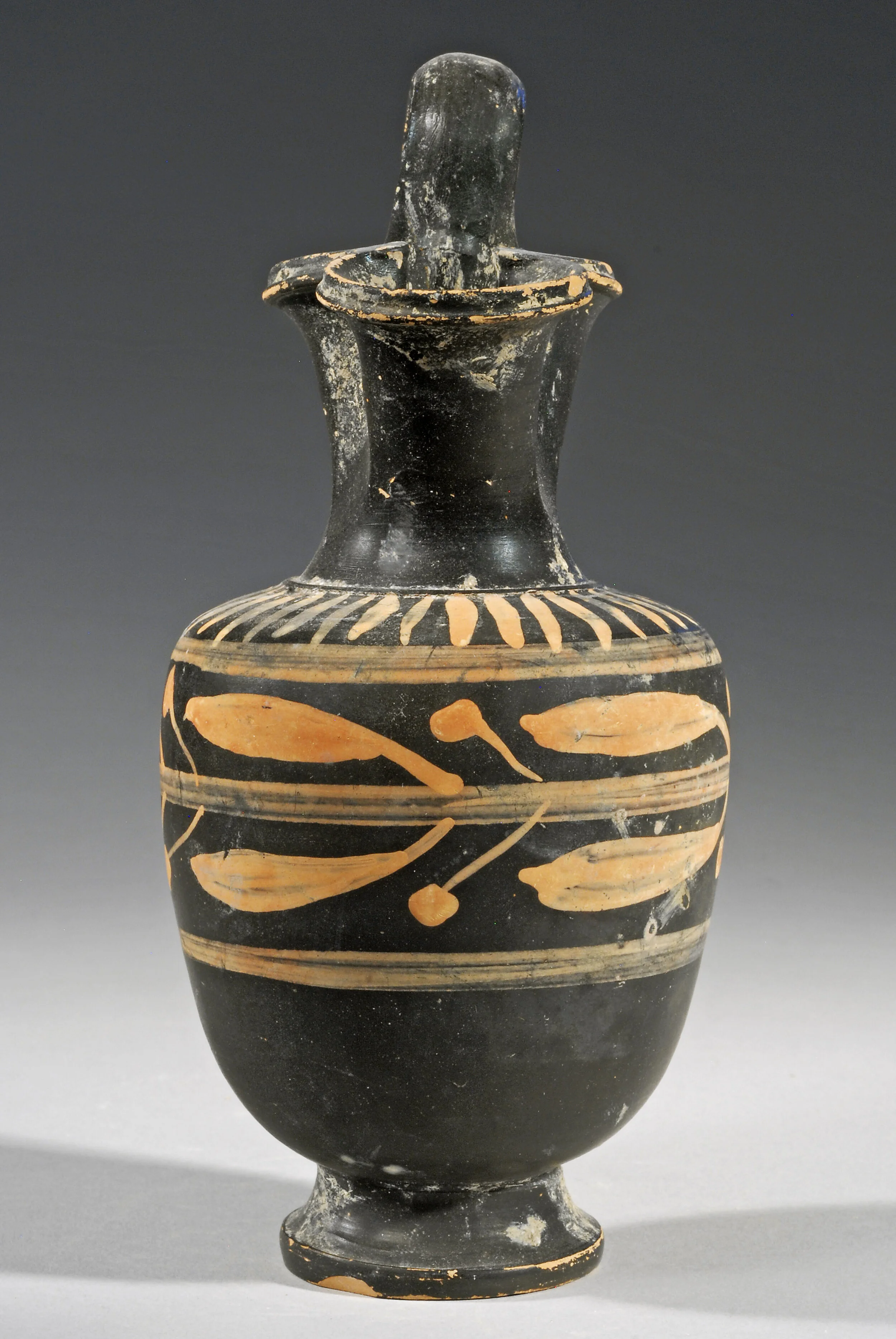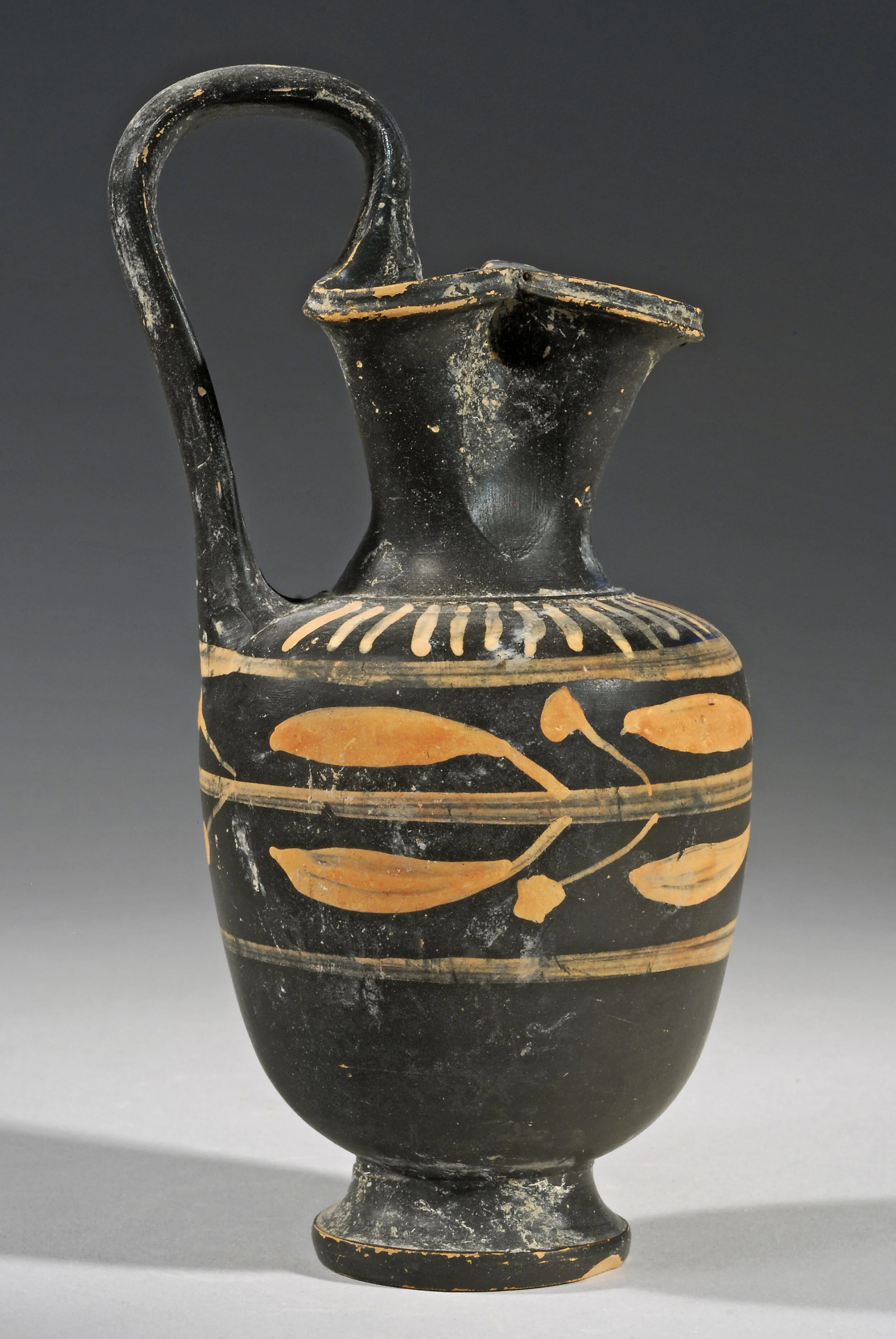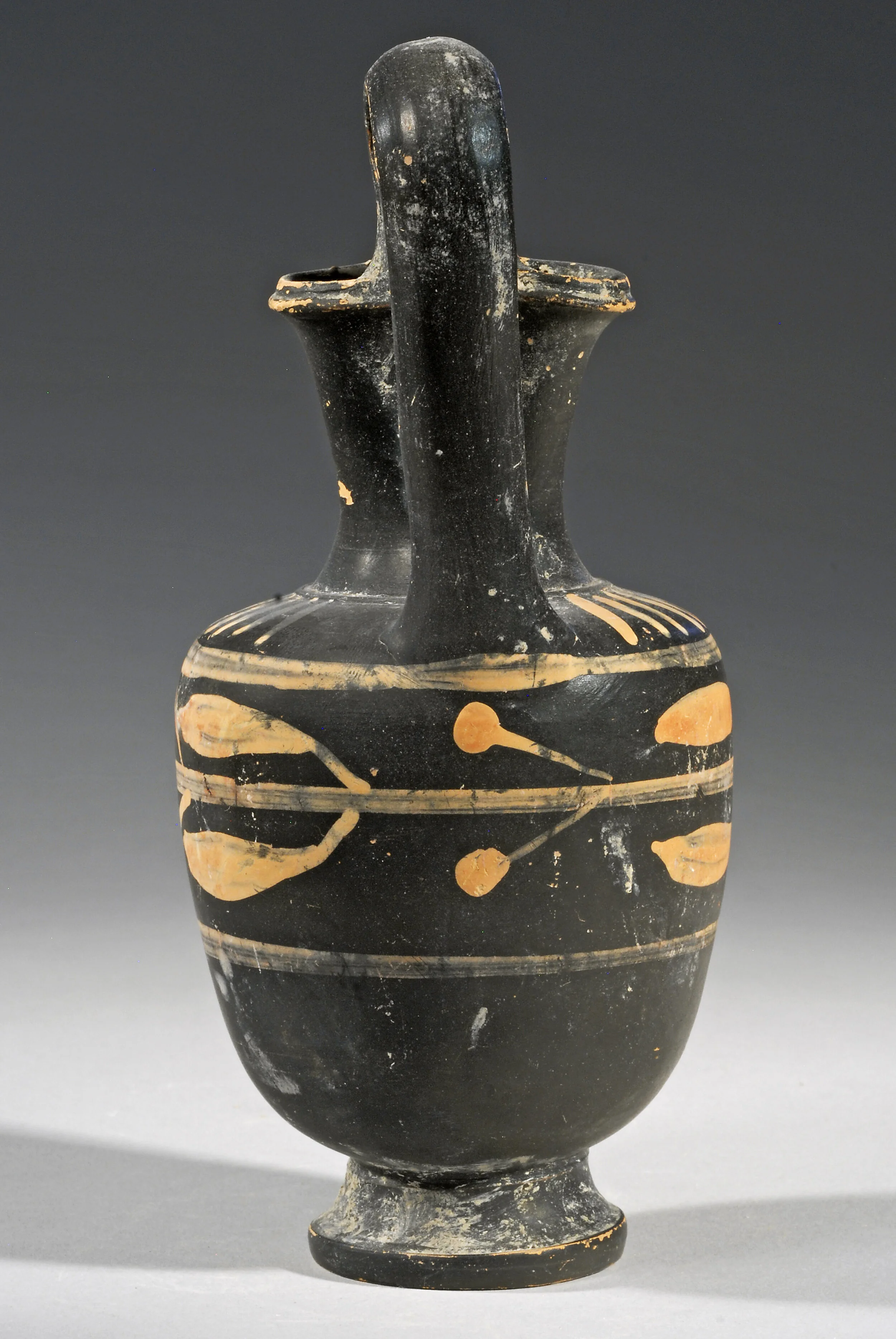Ancient South Italian Red-Figure Oinochoe




Ancient South Italian Red-Figure Oinochoe
South Italian, ca. 4th century B.C.
Terracotta
H: 16 cm
Serial: 5018
Provenance: Private collection, acquired in the late 1970s- early 1980s
This vase is intact and in a fine state of preservation. It is decorated with a red figure technique that is rarely used, in which clear red matte designs have been applied to the black varnished surface of the vase. This technique was invented in Attica in the 5th century B.C. as an alternative to and in imitation of more well-known red figure processes, where only the bottom of vases were varnished in black, while subsidiary decoration and figures were left unpainted, in the brick red color of the terracotta. As opposed to mainland Greece, where the technique for super-imposing the red paint on the black ground never acquired many followers and did not create an artistic style, in Magna Graecia this technique was often used, especially for the production of small and medium sized vessels such as kantharos, oinochoi and olpes. Some miniature examples were possibly children’s toys.
This style was introduced during the 5th century. B.C. and lasted until the end of the 4th century. B.C. The form of the oinochoe with a trefoil lip and high handle is a classic of the Greek repertoire. It was a pitcher used during banquets (symposia) to serve wine, which was poured directly from a crater and into the guest’s cup.
The decoration of this cop is both simple and signifigent. The main scene depicts an olive or laurel garland, composed of long leaves and laid out top to bottom with a central line alternating with round olives or berries. By its form and design, this piece belongs to a group that archeologists call Xenon ware, which was recognized for the first time by the great scholar J.D.Beazley during the middle of the last century. The workshops belonging to this group and specializing in the production of comparable vases are found in today’s Puglia.






